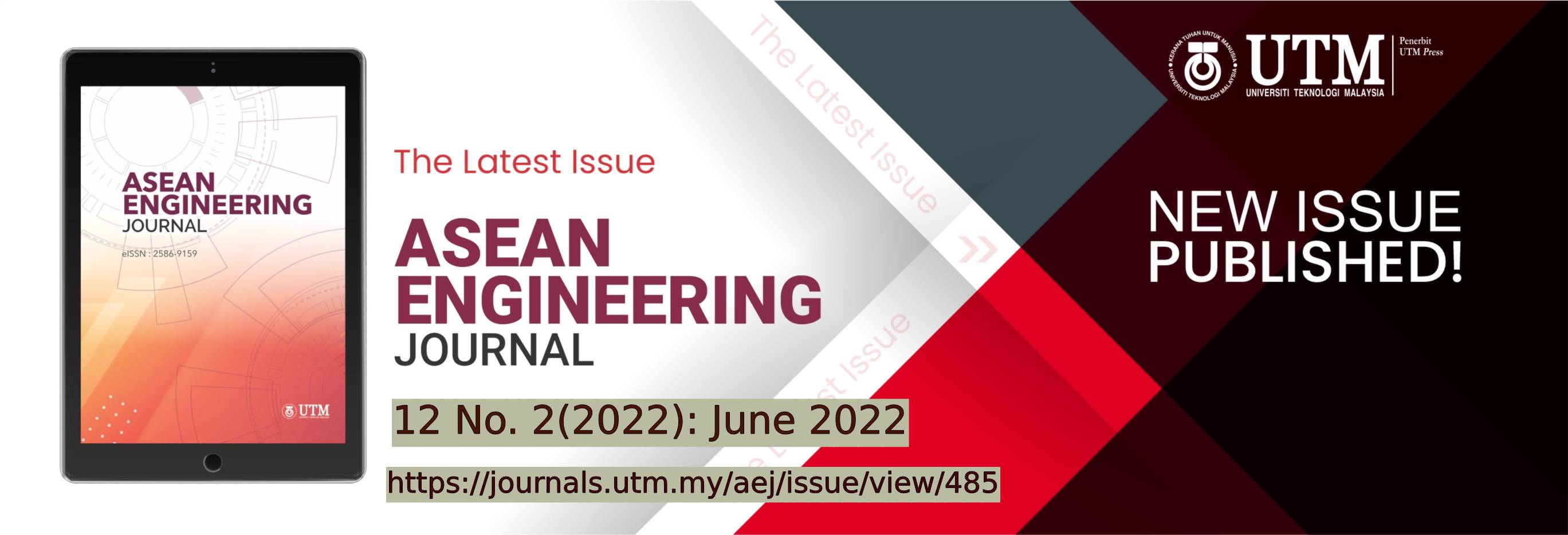USE OF CLAYSTONE, ZEOLITE, AND ACTIVATED CARBON AS A COMPOSITE TO REMOVE HEAVY METALS FROM ACID MINE DRAINAGE IN COAL MINING
DOI:
https://doi.org/10.11113/aej.v12.16982Keywords:
Acid mine drainage, Adsorption, Cpacity, Composite, EffectivenessAbstract
Acid mine drainage is an environmental issue impairing water sources globally. Efficient and continuous treatment in mining regions is urgently required. Therefore, this research aimed to evaluate the use of claystone from coal overburden, zeolite, and activated carbon from coconut shell as a composite to remove Fe and Mn from acid mine drainage. XRD, BET, and SEM characterized the adsorbent. The X-Ray Diffraction analysis showed the types of mineral in claystone were kaolinite, zeolite: mordenite, and activated carbon: cristobalite. Composite made with three ratios (Claystone:Zeolite:Activated carbon) = 50:25:25; 25:25:50; and 25:50:25. According to the surface area analyzer, composite with a 25:25:50 ratio had the largest surface area (62,44 m2/g). SEM-EDX analysis showed that composite had porous morphology and active sites such as Al and Si. Adsorption was carried out using a hot plate stirrer with various contact time: 30,60,90,120 and 150 minutes. The results showed that composite succeeded in increasing pH from 2.6 to 7.0 and reducing Fe concentration from 13.006 to 0.1484 ppm (98,86%) and Mn concentration from 30.59 to 20.283 ppm (33,69%). The adsorption capacities of the composite were 1,286 mg/g for Fe and 1,031 mg/g for Mn. It can be concluded that composite is a good adsorbent for removing iron from acid mine drainage.
References
Balintova. M., Holub. M., Stevulova. N., Cigasova. J., & Tesarcikova. M., 2014. “Sorption in acidic environment–biosorbents in comparison with commercial adsorbens”, Chemical Engineering Transactions 39:625-630. DOI:10.3303/CET1439105
Catri. C. R., 2016.” The Effectiveness of Natural Zeolite as Metal Absorbent Copper (II) in Pool Water With Coloumn Adsorption Method”, Jurnal Penelitian Saintek, 21(2): 87-95,
Diola. M. B. L., & Orozco. C. 2015. “Improved Removal of Copper Ions from Aqueous Solution Using NaOH-Pretreated Coco Peat”, ASEAN Engineering Journal, 4(1): 93-103,
Kerndorff. H., and Schnitzer. M., 1980. “Sorption of Metals on Humic Acid”, Geochim Cosmochim Acta, 44: 1577-1581,
Li. W., Peng. J., Zhang. L., Yang. K., Xia. H., Zhang, S., & Guo. S. H. 2009., “Preparation of activated carbon from coconut shell chars in pilot-scale microwave heating equipment at 60 kW”, Waste management, 29(2): 756-760,
Long. N. Q., Vuong. H. T., Ha. H. K. P., Kuniawan. W., Hinode. H., & Baba. T., 2016. “Preparation, characterization and H2S adsorptive removal of ion-exchanged zeolite X”, ASEAN Engineering Journal, 5(1): 4-14,
Mukarrom. F., Karsidi. R., Gravitiani. E., Astuti. F., & Maharditya. W. 2020., “The assessment of claystone, quartz and coconut shell charcoal for adsorbing heavy metals ions in acid mine drainage”, Materials Science and Engineering, 858(1): 012040,
Musso. T. B., Parolo. M. E., 2014. Pettinari. G., & Francisca. F. M., “Cu (II) and Zn (II) adsorption capacity of three different clay liner materials”, Journal of environmental management, 146: 50-58,
Nwosu. F. O., Ajala. O. J., Owoyemi. R. M., & Raheem. B. G. 2018., “Preparation and characterization of adsorbents derived from bentonite and kaolin clays”, Applied Water Science, 8(7): 195,
Pan, S. C., Lin, C. C., & Tseng, D. H. 2003., “Reusing sewage sludge ash as adsorbent for copper removal from wastewater”. Resources, Conservation and Recycling, 39(1): 79-90
Patterer. S., Bavasso. I., Sambeth. J., Medici. F. 2019., “Cadmium removal from acqueous solution by adsorption on spent coffee grounds”, Chemical Engineering Transactions, 60, 157-162, 2017.
Petroleum, B., “BP statistical review of world energy report” BP: London, UK,
Pranoto, Martini. T., Astuti. F., & Maharditya. W. 2020., “Test The Effectiveness and Characterization of Quartz Sand/Coconut Shell Charcoal Composite as Adsorbent of Manganese Heavy Metal”, Materials Science and Engineering, 858(10): 012041,
Roca. Y. B., & Fuentes. W. S. 2019. “Use of Nanoclay as an Adsorbent to Remove Cu (ii) from Acid Mine Drainage (AMD)”, Chemical Engineering Transactions, 73: 241-246,
Tan. I. A. W., Abdullah. M. O., Lim. L. L. P., & Yeo. T. H. C. 2017., “Surface modification and characterization of coconut shell-based activated carbon subjected to acidic and alkaline treatments”, Journal of Applied Science & Process Engineering, 4(2): 186-194
















